
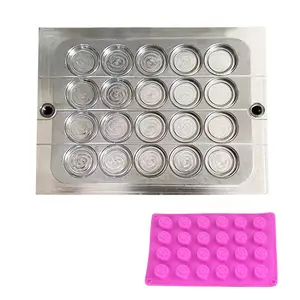
Manufacturing Die Casting Molds Low Price Design Silicone Rubber Mould Silicone Custom Mould Press Mould

Low Price Custom Die Casting Mould Manufacture Aluminium Die Casting Mould King Concrete Mouldings Factory Price





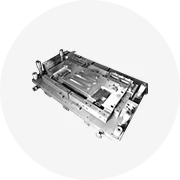
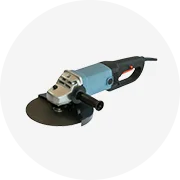


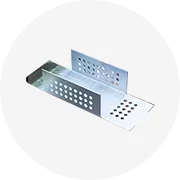
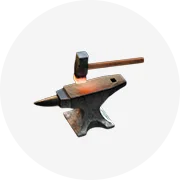
The term chair moulding encompasses a variety of decorative and functional trims used to accentuate and protect walls, typically at the height of a chair back. These mouldings serve both an aesthetic and practical purpose, preventing damage to walls from chairs and enhancing the overall design of a room. The following sections delve into the intricacies of chair moulding, exploring its types, materials, applications, and more, to give business buyers comprehensive insights into this product category on Alibaba.com.
Chair moulding comes in various types, each with unique features. Chair rail molding and chair rail trim molding are classic examples, often used in dining rooms and hallways for a traditional look. Contemporary chair rail offers a more modern aesthetic, suitable for office buildings and commercial spaces. Beadboard chair rail combines the timeless appeal of beadboard wainscoting with the practicality of a chair rail, ideal for adding character to a room. Dado rail panels and lowes chair rail provide options for those seeking variety in design and price points. The moulding chair rail can also be found in intricate designs, adding an element of sophistication to any setting. Each type of chair moulding is designed with specific settings in mind, from the luxurious chair rail wainscot suitable for grand hotels to the simple chair rail modern designs that fit seamlessly into minimalist decor.
The structure of chair moulding is designed for durability and ease of installation. Chair rail on wall installations typically involve a simple yet secure attachment to the wall, with options for chair rail wainscot integration. The physical components of chair moulding include the main body, which is the visible part of the moulding, and the backing, which is attached to the wall. Some mouldings may also include a cap or a shoe moulding to finish the top or bottom edge. The installation process involves precise measurement and cutting of the moulding to fit the wall, securing it in place with nails or adhesive, and then finishing with caulk or paint as needed. The operation of chair moulding is passive, yet it plays a crucial role in the protection and decoration of wall spaces.
Materials used in chair moulding range from moulding plywood to wood chair rail, each offering different aesthetic and durability characteristics. PU, metal, PVC, and stainless steel are also common, catering to various design styles and functional requirements. The choice of material affects the moulding's longevity and maintenance needs. Wood, for instance, provides a classic look and can be painted or stained to match any decor, but may require more maintenance. PVC and metal, on the other hand, offer durability and resistance to moisture, making them ideal for high-traffic areas or environments with high humidity. The benefits of these materials include their longevity, ease of maintenance, and the ability to withstand daily wear and tear.
Chair moulding has broad applications across various industries. It's used in residential settings like living rooms and home offices, as well as in commercial spaces such as hotels and schools. In the hospitality industry, for example, chair rail paneling can add to the ambiance of a dining area while protecting walls from scuffs and marks. In educational settings, beadboard and chair rail can withstand the high-traffic use of students while also contributing to a focused learning environment. The versatility of chair moulding makes it a popular choice for both home furniture and commercial furniture applications, creating business value by enhancing the aesthetic appeal and longevity of interior spaces.
Chair moulding is designed to perform specific tasks such as protecting walls from furniture damage, concealing imperfections, and providing a visual break in wall color or texture. It can also serve as a support for additional decorative elements like wallpaper borders or fabric wraps. The chair rail trim functions as a barrier, absorbing impacts and preventing scuffs, while the design elements of chair railing home depot selections can complement architectural features in a room, adding depth and character.
The distinct characteristics or capabilities of chair moulding include its multifunctionality as both a decorative and protective element. Unique selling points such as the energy-saving aspect of chair rail modern designs, which can reduce the need for extensive wall repairs, set these products apart from competitors. The chair rail wainscot combination, for instance, offers a two-in-one solution for wall protection and aesthetic enhancement, making it a cost-effective option for buyers.
For businesses, chair moulding offers numerous benefits. It's a cost-effective way to enhance the aesthetics of a space, which can be a selling point for property developers and interior designers. Additionally, the protective aspect of chair rail trim can reduce maintenance costs by preventing wall damage. The installation of chair moulding can also be a quick and easy update that adds value to a property without the need for extensive renovations.
Choosing the right chair moulding involves considering the design style of the space, the material's durability, and the type of application. For a traditional look, chair rail paneling or chair railing and wainscoting might be ideal, while a contemporary chair rail could be better suited for modern interiors. The material should be chosen based on the environment it will be used in, with moisture-resistant options like PVC for bathrooms or stainless steel for high-traffic areas. Additionally, the scale of the moulding should be appropriate for the room's ceiling height and size to maintain proportion and balance.
Maintenance and cleaning of chair moulding depend on the material. Wood mouldings may require periodic staining or painting, while metal or PVC mouldings can be cleaned with a damp cloth and mild detergent. Regular dusting can prevent buildup and maintain the moulding's appearance. For more detailed cleaning, especially for textured or intricate designs, a soft-bristled brush may be used to remove dust and dirt from crevices.
Installation of chair moulding typically requires measuring and cutting the moulding to fit, securing it to the wall with nails or adhesive, and applying caulk or putty to seal any gaps. Professional installation is recommended for complex designs or materials that require special handling. It's important to ensure that the moulding is level and that the joints between pieces are tight and well-aligned for a professional finish.
Through Alibaba.com, business buyers can explore a vast selection of chair moulding products, each designed to meet the diverse needs of the global market. With detailed product descriptions and specifications, buyers can make informed decisions to find the moulding solutions that align with their project requirements.